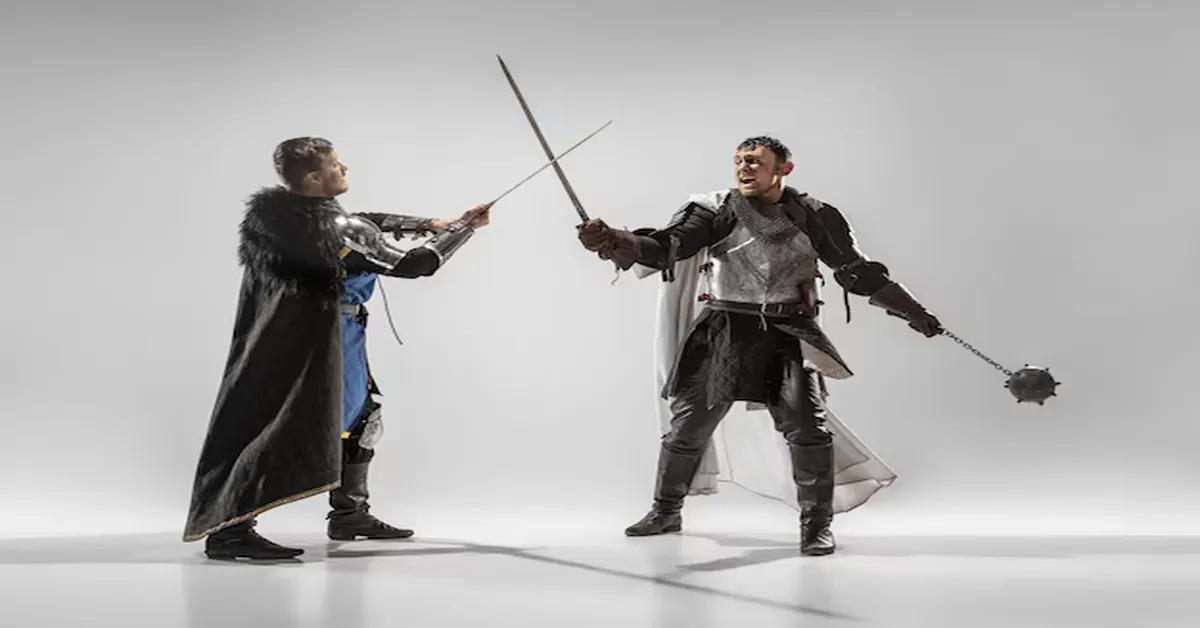The crossguard lightsabers are one of the most visually striking and unique weapons in the Star Wars universe. Unlike the standard single-bladed lightsaber, this design features two smaller side blades, or quillons, that emit from vents on either side of the main blade. This design serves both practical and aesthetic purposes, making it a formidable weapon with a deep-rooted history in the lore of the Jedi and Sith. In this article, we’ll explore the origins, mechanics, famous wielders, and significance of crossguard lightsabers.
What is a Crossguard Lightsaber?
A crossguard lightsaber is a variation of the traditional lightsaber, distinguished by its unique hilt design that includes additional plasma vents on either side of the main blade. These vents form two smaller side blades that act as a defensive mechanism, reminiscent of medieval swords. The crossguard design is not just a stylistic choice; it also has practical combat applications.
Key Features of a Crossguard Lightsaber:
- Primary blade: The main energy blade, powered by a kyber crystal.
- Side quillons: Smaller plasma blades that emerge from vents, stabilizing the saber’s energy flow.
- Vented plasma release: Helps prevent instability caused by cracked or overcharged kyber crystals.
- Distinctive hilt design: Often bulkier than traditional lightsabers, providing a different grip and combat style.
History and Origins of Crossguard Lightsabers
The crossguard lightsaber is not a modern invention in the Star Wars timeline; it has ancient origins dating back to the time of the Old Republic and beyond.
1. Ancient Sith and Jedi Variants
- Crossguard lightsabers have been seen in various ancient Sith and Jedi artifacts, where warriors experimented with different designs to enhance combat effectiveness.
- Some early Jedi used variations of the crossguard style in dueling, adding defensive elements similar to medieval longswords.
- Sith warriors in the past sought ways to increase intimidation, leading to the creation of these aggressive, fiery designs.
2. Medieval Sword Influence
The design of the crossguard lightsaber is inspired by historical European longswords and greatswords, which featured crossguards to protect the wielder’s hands during combat.
How a Crossguard Lightsaber Works
1. Kyber Crystal and Energy Flow
- A kyber crystal powers all lightsabers, but crossguard lightsabers often contain cracked kyber crystals, which require venting excess energy through the quillons.
- The additional plasma release helps maintain stability, preventing the blade from overheating or becoming unstable.
2. Combat Advantages
- Defensive utility: The side quillons can block or deflect an opponent’s blade, preventing direct strikes to the hilt.
- Striking power: Wielders can use the extended quillons to slash or pierce through defenses.
- Psychological intimidation: The jagged, flame-like appearance of some crossguard lightsabers makes them appear more unstable and fearsome.
Famous Crossguard Lightsaber Users
1. Historical Jedi and Sith
- While rare among Jedi, some ancient warriors experimented with crossguard designs.
- The Sith, known for their aggressive battle styles, were more likely to adopt this weapon variant.
2. Notable Figures in Star Wars Lore
- Various Jedi and Sith holocrons depict crossguard lightsabers, symbolizing an era of experimentation and war.
Cultural and Symbolic Significance
1. Symbol of Power and Aggression
- The crossguard lightsaber, often associated with raw energy and brute strength, reflects the wielder’s passion and power.
- It is frequently linked to Sith Lords and warriors who embrace the Dark Side.
2. A Rare and Specialized Weapon
- Unlike traditional lightsabers, crossguard versions are rarely seen in modern Star Wars stories, emphasizing their uniqueness.
- The weapon’s design appeals to warriors who seek intimidation and tactical advantages.
How to Wield a Crossguard Lightsaber
Unlike a traditional lightsaber, wielding a crossguard lightsaber requires a different combat approach:
1. Two-Handed Grip
- The heavier hilt and additional blades make it ideal for two-handed combat styles, similar to medieval broadswords.
2. Blocking and Parrying
- The quillons provide extra blocking potential, deflecting incoming strikes from different angles.
3. Unpredictable Attack Patterns
- Users can utilize the side blades to land surprise attacks, making it harder for opponents to predict movements.









